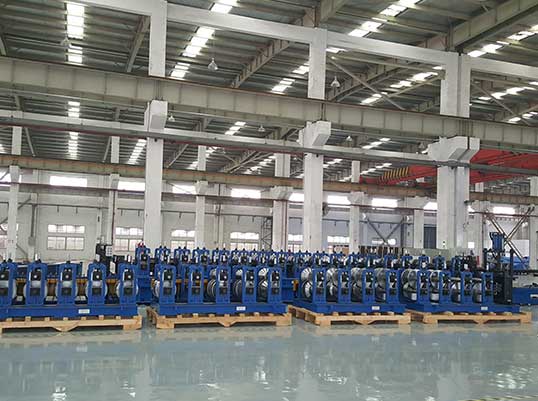Navigation Menu
Contact Us
- Email:
- info@wxavatar.com
- Address:
- Yurong Village, Yuqi Street, Huishan District, Wuxi, China.
Release Date:Oct 26, 2024 Visit:72 Source:ZCM Roll Forming Machine
The evolution of solar stand roll forming machines has been marked by significant strides in efficiency, transforming the manufacturing landscape for solar panel supports and frameworks. Roll forming, a process where a continuous strip of metal is passed through a series of forming rolls to achieve a desired shape, has traditionally been a reliable method for producing such components. However, recent advancements have pushed the boundaries of what is achievable, leading to enhanced efficiency and productivity in solar stand production.

One of the primary drivers of enhanced efficiency in solar stand roll forming machines is the integration of advanced automation technologies. Automated systems have replaced manual processes, reducing human error and speeding up production times. By incorporating sensors, robotics, and computer-aided manufacturing (CAM) software, manufacturers can now achieve higher levels of precision and control over the roll forming process. This automation not only improves the quality of the final product but also increases throughput, allowing for the production of more solar stands in a shorter period.
Another key factor contributing to enhanced efficiency is the optimization of the roll forming process itself. Manufacturers have invested in research and development to refine the design and arrangement of the forming rolls. By carefully engineering the roll profiles and sequences, they have been able to reduce the number of passes required to achieve the desired shape, thereby minimizing material waste and energy consumption. Additionally, the use of high-strength, wear-resistant materials for the rolls has extended their lifespan, reducing the need for frequent replacements and maintenance.
The integration of real-time monitoring and feedback systems has also played a crucial role in enhancing efficiency. These systems continuously track the performance of the roll forming machine, providing valuable insights into process variables such as temperature, pressure, and speed. Manufacturers can use this data to make informed adjustments to the process, ensuring optimal performance and minimizing downtime. Real-time monitoring also allows for predictive maintenance, enabling manufacturers to address potential issues before they result in costly repairs or production delays.
The design of solar stand roll forming machines has also evolved to improve efficiency. Modern machines are built with modular components, allowing for easy customization and scalability. This means that manufacturers can quickly adapt their machines to produce different sizes and shapes of solar stands, without the need for extensive redesign or retooling. This flexibility enables them to respond quickly to market demands, reducing lead times and increasing overall productivity.
Furthermore, the integration of advanced data analytics and machine learning algorithms has revolutionized the way manufacturers approach process optimization. By analyzing historical production data, manufacturers can identify patterns and trends, enabling them to make data-driven decisions that further enhance efficiency. Machine learning algorithms can also be used to predict and optimize process parameters, ensuring that the roll forming machine operates at its peak performance levels.
In terms of materials handling, modern solar stand roll forming machines have also seen improvements. Automated feeding and conveying systems have been developed to streamline the movement of raw materials and finished products through the production line. These systems reduce the need for manual handling, improving safety and reducing labor costs. Additionally, the use of high-capacity storage and retrieval systems has enabled manufacturers to keep a steady supply of materials on hand, minimizing disruptions to the production process.

Overall, the enhanced efficiency of solar stand roll forming machines has had a significant impact on the solar industry. By increasing production capacity, reducing waste, and optimizing process parameters, manufacturers have been able to produce high-quality solar stands at a lower cost. This, in turn, has contributed to the broader adoption of solar energy, making it a more viable and attractive option for consumers and businesses alike. As the solar industry continues to grow, manufacturers will need to stay at the forefront of innovation, continuously refining and improving their roll forming machines to meet the evolving needs of the market.